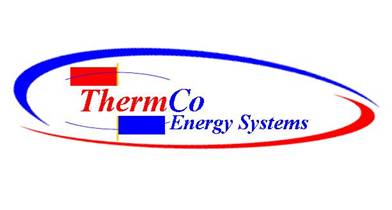|
What is a Wind Power Generator |

|
When looking for a wind power solution to save on the cost of energy there are several factors to consider. How is your wind supply? Most all locations throughout the world the weather has been recorded and your own geographic location is documented. With this information and the precise wind power generator you can have a system designed to fit your needs. How is your installation layout? Review the overall structures, obstacles , and landscaping to plan the proper placement of the wind power generator is important to gain the most optimal efficiency. How much wind generator power do you need? Take an inventory of your buildings electric consumption envelope. Review your electrical bill. Considering your needs and wind supply you can design a system to help offset your consumption or totally remove yourself for the grid. If your wind supply is seasonal consider incorporating it with solar. |
|
Total Energy Conservation Products |
|
While the wind power solution has yet to be most economical solution, there are thousands of Americans off the grid and using wind and solar as their only means of power. Utilizing what you have in place, then applying changes to improve it to its full energy saving potential. Consider ways to retro fit structures, Residential, Small Retail Stores, Grocery Stores, Pharmacy, Warehouse, or Commercial buildings to find cost savings solutions and gain the quickest return on your investment. Wind power generators are a valuable solution to the ever rising cost of energy and the now being applied “High Peek Demand” charges. |
|
A windmill is an engine powered by the energy of wind to achieve its design. There are all types of designs to accomplish jobs like mechanical powering, milling grain, water pumping, threshing, and saw mills. Over time windmills have evolved into more sophisticated purposes now being referred as green energy using natural resources, wind power machines used for generating electricity which are more properly called wind turbines. |
|
Make a list of your natural resources you have available. With this approach you will be able to isolate your needs and consider the most efficient, cost effective, and economical energy solution to save real money. |
|
The Small Wind Certification Council is a newly-incorporated independent certification body that will take test results for small wind turbines and issue a North American small wind certification and provide power, energy production and sound labels for the turbine. Program field tests for metrics such as power curve, annual energy performance, sound pressure levels, strength and safety tests, and duration tests are run by DOE/NREL. |
|
What should I need to know about buying a wind power generator. |
|
Wind turbines, also called a wind mills, is a means of harnessing the kinetic energy of the wind and converting it into electrical energy. By its design a Horizontal-Axis and Vertical-Axis, is accomplished by turning blades called aero-foils, which drive a shaft, which drive a motor (turbine) and are connected to a generator. Most common low speed horizontal-axis windmills are used for water pumping and air compressing. |
|
Mixing natural energy producing resources like wind power and solar can be an excellent energy supplier. This design can complement each other, especially where the sun is not present in some seasons and wind is, this also vice-versa. The new wind power generators are very sophisticated and can capture both the ferocious and gentle winds. |
|
The National Renewable Energy Laboratory's (NREL's) National Wind Technology Center (NWTC), located at the base of the foothills just south of Boulder, Colorado, is the nation's premier wind energy technology research facility. Built in 1993, the center provides an ideal environment for the development of advanced wind energy technologies. The goal of the research conducted at the center is to help industry reduce the cost of energy so that wind can compete with traditional energy sources, providing a clean, renewable alternative for our nation's energy needs. |
|
In the U.S. alone, as of 2015 Wind Capacity and Wind Projects have increased to 28,635 locations in 45 states. This does not include any small commercial or residential applications. View the animated map showing the growth rate since 1999 to 2015, you will see how this wind power technology as been increasing. This is a good example of how America is utilizing its natural resources to help reduce carbon footprint, emissions, and recycling. |
|
The U.S. Department of Energy has been documenting and recording wind information. One of Wind Powering America's key activities is to provide validated, high-resolution state wind maps. Now published are two Wind Resource Maps to review of the United States. |